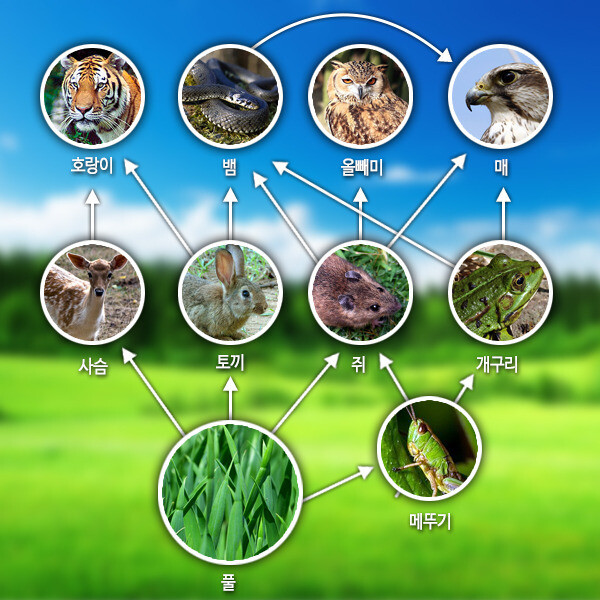
Amidst intensifying research on climate change and biodiversity, South Korea's National Species List, a crucial element in strengthening the nation's biological sovereignty, has reached a total of 61,230 species, marking an increase of 1,220 species compared to the previous year. This notable achievement is the result of the 'National Biological Resources Comprehensive Inventory Project' initiated by the National Institute of Biological Resources (NIBR) in 2008, indicating the continuous discovery of new biological entities on the Korean Peninsula.
The NIBR recently announced that, as of the end of last year, a total of 61,230 species were registered in the National Species List, categorized as follows: △Plants: 5,781 species (22 new), △Vertebrates: 2,152 species (62 new), △Invertebrates: 32,093 species (490 new), △Fungi: 6,402 species (111 new), △Algae: 6,703 species (50 new), △Protozoa: 2,590 species (15 new), and △Prokaryotes: 5,509 species (470 new).
Of particular interest is the inclusion of newly discovered species that have garnered significant attention from the academic community. Meioglossus jejuensis Worsaae, 2024, a newly identified invertebrate found on Jeju Island, belongs to the phylum Hemichordata, a rare discovery that increases the number of invertebrate phyla reported in Korea from 23 to 24. Considering that 34 invertebrate phyla have been reported globally, this new species is expected to significantly contribute to the consolidation of Korea's invertebrate classification system. Hemichordates are an animal group considered to be an intermediate link between chordates and echinoderms, resembling acorn worms and inhabiting marine sediment. The genus Meioglossus is a rare genus with few reported cases worldwide, making this discovery on Jeju Island a testament to the Korean Peninsula's value as a repository of biodiversity.
Furthermore, the discernible impact of climate change is evidenced by the successive discoveries of tropical and subtropical species in Korean waters and terrestrial environments, raising concerns about ecological shifts. The Yellow Butterflyfish (Chaetodon selene), native to Indonesia, has been identified for the first time off the coasts of Tongyeong and Jeju Island. Similarly, the Blunt-horned Sand Scarab Beetle (Rhyssemus inscitus), originating from Sri Lanka, has been found in Taean and Jeju Island. In addition to these, five tropical fish species and ten tropical insect species have been newly added to the National Species List, indicating a faster-than-anticipated subtropicalization of the Korean Peninsula's ecosystem. Experts emphasize the need for continuous monitoring and research into the potential impacts of these northward migrations of tropical species on existing native ecosystems.
The NIBR is also actively working to assign Korean names to various biological resources to enhance their utility in the bioindustry. Notably, new Korean names have been assigned to a total of 305 genera in the fungi kingdom, including Papiliotrema and Fulvoderma, which hold high potential as biomaterials, thereby increasing accessibility for researchers and the industry. Furthermore, Korean names have been assigned to 44 species of Chironomidae (non-biting midges), important indicator species for water resource management, which is expected to contribute to related research and environmental assessments. Additionally, Rhododendron sohayakiense var. koreanum, an endemic species registered in the National Species List in 2019, has been newly named 'Huin-cham-kkoch-namu' (White Korean Azalea), reflecting its beautiful appearance and enhancing understanding of Korea's plant resources. A total of 857 species received new Korean names last year, which is evaluated as significantly improving the efficiency of national biological resource management.
Meanwhile, efforts to ensure the uniformity of national biological resource management are steadily progressing. Korean names have been revised for 54 species, including Jeffersonia dubia (Diphylleia grayi), listed as protected wildlife in Seoul, to align with the standards of the 'National Species List'. This is considered an important step towards unifying the species names that were used differently by local governments, thereby enhancing the efficiency of national biological resource management and research.
Dr. Suh Min-hwan, President of the National Institute of Biological Resources, emphasized, "The establishment of the National Species List is not merely about securing a list of biological species; it is a crucial process for securing internationally recognized biological material information, which will serve as a fundamental basis for research into the characteristics of Korea's biological resources and the development of the bioindustry." The NIBR stated its commitment to further strengthen national biological sovereignty through continuous species surveys and research and to take the lead in preserving biodiversity, a vital resource for future society. This expansion of the National Species List is expected to broaden understanding of the Korean Peninsula's rich biological resources and pave the way for diverse research and industrial applications based on this knowledge.
[Copyright (c) Global Economic Times. All Rights Reserved.]



























